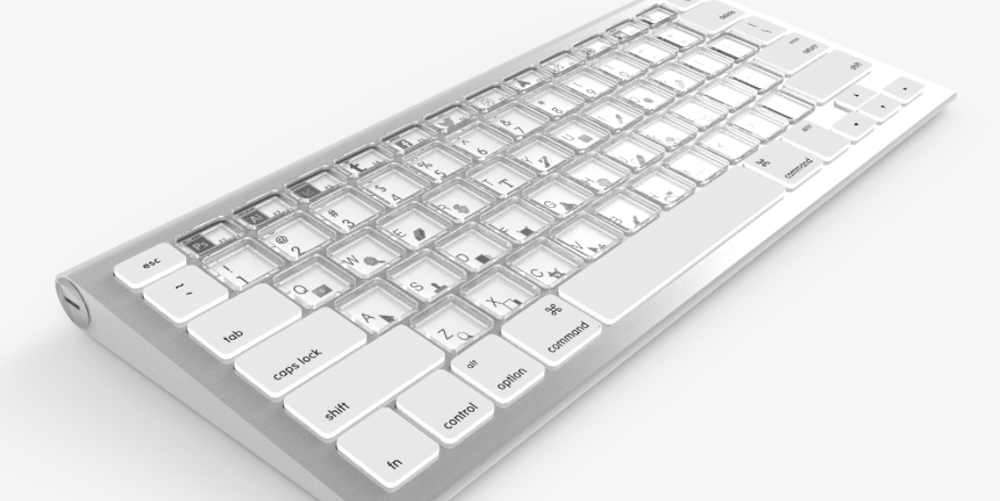

Following speculation that Apple may be looking to acquire Sonder Keyboard, the startup yesterday confirmed to us that it has been in discussions with Apple’s procurement board. Coincidentally or not, the company’s website was not accessible at the time of writing (that may simply be yesterday’s story driving too much traffic to it, of course).
Sonder was not the first company to make a keyboard with dynamically-assigned keys. Patents for the idea go back as far as the 1970s, and the first commercially-available one was the German-made LC Board in the 1980s.
The Optimus Maximus was one of the better-known examples of the technology, later superseded by the Optimus Popularis, in which each key is an individual color LCD display. At $1500, it hasn’t exactly made it into the mainstream, and other examples have come and gone.
But Sonder’s approach has a realistic shot at making dynamic hardware keyboards a mainstream technology …
Sonder’s use of e-ink keys has two great advantages over LCD or OLED ones. First, it’s much more affordable: the keyboard is currently on pre-order at $199, which is just twice the price of Apple’s Magic Keyboard. The cost to Apple of manufacturing something similar ought to add a relatively modest amount to the cost of a MacBook.
Second, while color LCD displays are power-hungry, e-ink displays barely sip from a battery. They require no power to display their content, only to change what is displayed. That’s how a Kindle manages to run for a month or more on a single charge.
So the technology would be practical for Apple to adopt, and there is plenty of evidence that the company is interested in dynamic keys. It now appears certain that this year’s MacBook Pro models will have a dynamically-assigned OLED touchscreen panel in place of physical function keys, but the company’s enthusiasm for this approach of course dates back way further than this.
Apple’s most successful product was built on its early adoption of dynamic keyboards. It was the headline feature of the iPhone, which differed from existing smartphones of the time by dispensing with physical keys.
The argument Steve laid out then for virtual keys on a smartphone could be applied equally to a Mac keyboard.
What’s wrong with their user interfaces? They all have these keyboards that are there whether you need them or not. And they all have these control buttons that are fixed in plastic and are the same for every application. Well, every application wants a slightly different user interface, a slightly optimized set of buttons, just for it.
The argument for dynamic keys on a computer is perhaps a little less compelling. Typing on them is one of the primary things we do, which was never really the case with a smartphone. But AV professionals can spend hours in front of a Mac without typing anything more than the occasional filename.

That’s the reason many professionals choose to use keyboard overlays or custom keyboards for power apps like Photoshop, Lightroom, Final Cut Pro or Logic Pro. Those dedicated keyboards and overlays exist because they are huge time-savers. The ability to have your existing Mac keyboard switch instantly between overlay patterns for different apps would clearly be vastly more convenient.
And that’s not the only benefit of dynamic keyboards. Hold down a modifier key like Shift or Option and the keycaps could change to display appropriate content. Multilingual users could switch between keyboard layouts and letters. Or any one of us could choose between a white-on-black or black-on-white version to suit our tastes. Plus, you know, gadgets!
Now, sure, Sonder’s implementation isn’t particularly attractive. But ask any of us to name a company with a proven ability to take existing tech and make it both beautiful and usable, and we’re not going to have to think too hard.
So Apple may or may not buy Sonder, but I do think that, sooner or later, it will switch to some kind of dynamic hardware keyboard tech. And in time, dumb keyboards will come to look as dated as dumb phones.
FTC: We use income earning auto affiliate links. More.


Comments